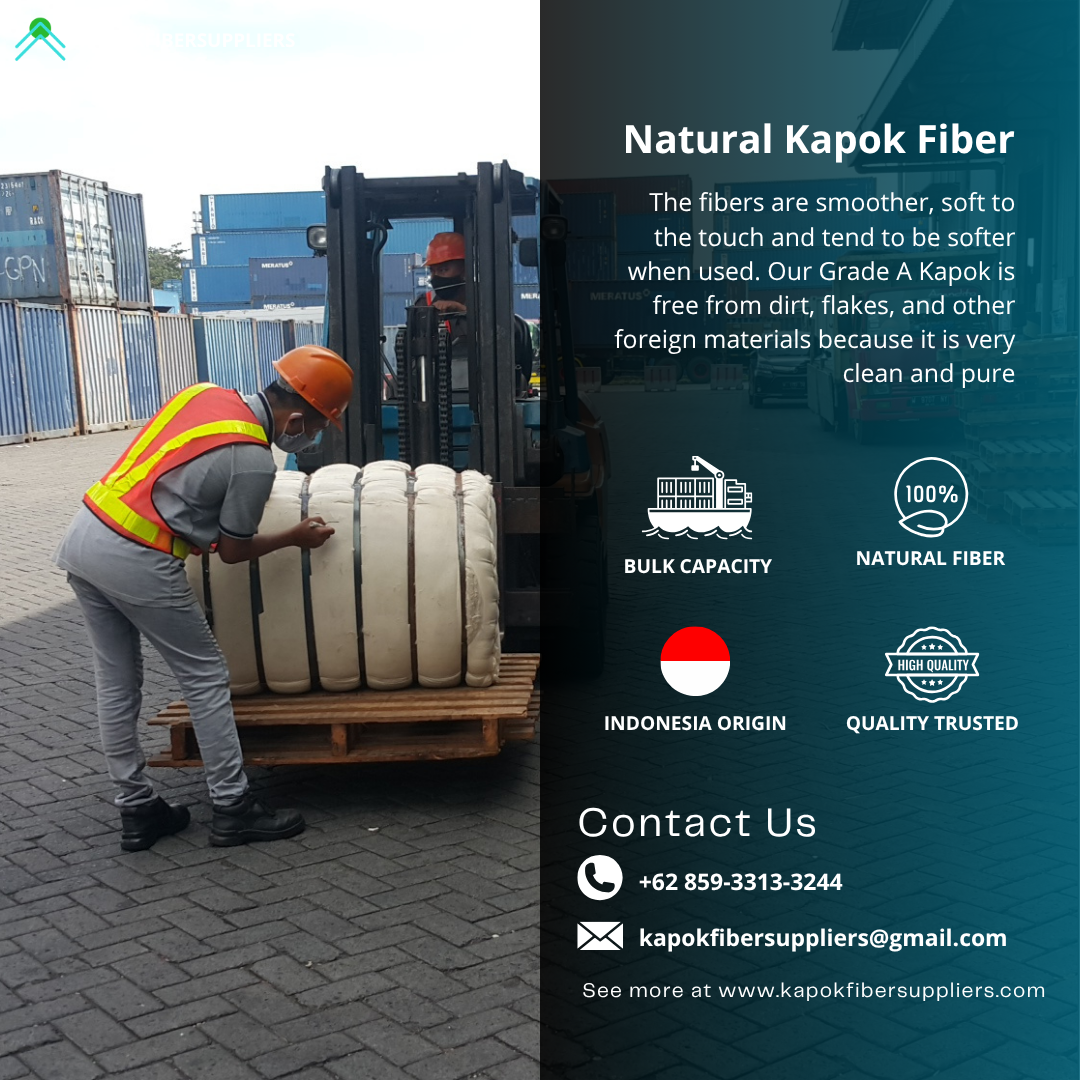
Introduction
As the world shifts toward eco-conscious alternatives, kapok fiber has emerged as a leading sustainable material. Extracted from the seed pods of the Ceiba pentandra tree, this lightweight, water-resistant, and biodegradable fiber is rapidly gaining global recognition. But what exactly makes kapok fiber stand out? Below, we delve into its unique properties, diverse applications, and environmental advantages.
What is Kapok Fiber?
Kapok fiber is derived from the silky, cotton-like substance enveloping the seeds of the kapok tree, which thrives in tropical regions such as Southeast Asia, Africa, and Latin America. Unlike cotton, kapok fibers are hollow, granting them exceptional buoyancy, lightweight structure, and superior thermal insulation.
Applications of Kapok Fiber
Thanks to its unique properties, kapok fiber is used across multiple industries:
- Textiles & Fashion
- Blended with cotton or silk for breathable, hypoallergenic fabrics.
- Used in eco-friendly mattresses, pillows, and upholstery.
- Sustainable Packaging
- Replaces synthetic fillers in biodegradable cushioning materials.
- Oil Spill Cleanup
- Absorbs oil but repels water, making it ideal for environmental remediation.
- Insulation & Construction
- Acts as a natural thermal and acoustic insulator in buildings.
- Life Jackets & Marine Equipment
- Its buoyancy makes it perfect for flotation devices.
Environmental Benefits of Kapok Fiber
- Renewable & Sustainable, Unlike conventional crops, kapok trees require no pesticides or irrigation.
- Carbon-Neutral Production, Since processing is minimal, energy consumption remains low.
- Biodegradable, In contrast to polyester, it decomposes without leaving microplastic waste.
Challenges & Future Potential
WAlthough kapok fiber offers numerous benefits, certain challenges hinder its widespread adoption:
- Limited Commercial Farming, Presently most kapok is wild harvested.
- Processing Costs, Because specialized machinery is required, large-scale production remains costly.
Nevertheless, with rising demand for sustainable materials, increased investment in kapok farming and processing could propel it into mainstream use.
Conclusion: Why Kapok Fiber is the Future
Kapok fiber is more than just a natural material it’s a sustainable solution for industries seeking eco-friendly alternatives. From fashion to construction, its versatility and low environmental impact position it as a key player in the green economy.
As consumers and manufacturers prioritize sustainability, kapok fiber is set to revolutionize how we produce and consume materials naturally, ethically, and efficiently.
